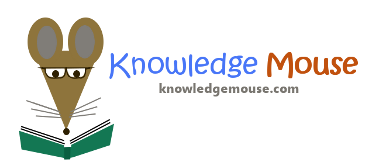
When you're ready to print, just click this button: Make Print-Friendly
Effective Strategies for Reinforcement Pre-Quiz
Created by minera
-
What is reinforcement?A. A thing given in recognition of one's service. B. A natural ability or talent. C. Objects or actions that increase the likelihood of a certain behavior. D. A strength or energy as an attribute of a physical action.
-
Who will benefit from reinforcement strategies?A. The child. B. All answers are correct. C. The child's parents and parents. D. The child's teacher. E. B and D F. The child's instructor
-
Who should be implementing reinforcement strategies?A. The crossing guard. B. The principal C. The mailman D. None of the answers are correct. E. All of the answers are correct.
-
Where can reinforcement be used?A. Only in public places. B. Only in home or at school. C. Anywhere! D. Mostly in the school setting.
-
How can reinforcement be implemented effectively?A. When used immediately after a target behavior is exhibited. B. Making sure it is an edible reinforcement with high sugar content. C. Wait 5 minutes after the wanted behavior, and then give the reinforcement. D. By ensuring the student does not know the reinforcement is coming.
-
Why is reinforcement an effective tool?A. It creates more unwanted behaviors and can be used in any setting. B. It reduces wanted behaviors and can be used in a variety of settings. C. It is an ethical solution to increase wanted behaviors and can be used in any setting. D. It helps students with their listening skills.
-
When is reinforcement effective?A. In a school setting. B. When a child needs to listen to the teacher's instructions more clearly. C. At home when the child feels the most comfortable. D. When a child needs the motivation to stay on task.

Effective Strategies for Reinforcement Pre-Quiz (Answer Key)
Created by minera
-
What is reinforcement?A. A thing given in recognition of one's service. B. A natural ability or talent. C. Objects or actions that increase the likelihood of a certain behavior. D. A strength or energy as an attribute of a physical action.
-
Who will benefit from reinforcement strategies?A. The child. B. All answers are correct. C. The child's parents and parents. D. The child's teacher. E. B and D F. The child's instructor
-
Who should be implementing reinforcement strategies?A. The crossing guard. B. The principal C. The mailman D. None of the answers are correct. E. All of the answers are correct.
-
Where can reinforcement be used?A. Only in public places. B. Only in home or at school. C. Anywhere! D. Mostly in the school setting.
-
How can reinforcement be implemented effectively?A. When used immediately after a target behavior is exhibited. B. Making sure it is an edible reinforcement with high sugar content. C. Wait 5 minutes after the wanted behavior, and then give the reinforcement. D. By ensuring the student does not know the reinforcement is coming.
-
Why is reinforcement an effective tool?A. It creates more unwanted behaviors and can be used in any setting. B. It reduces wanted behaviors and can be used in a variety of settings. C. It is an ethical solution to increase wanted behaviors and can be used in any setting. D. It helps students with their listening skills.
-
When is reinforcement effective?A. In a school setting. B. When a child needs to listen to the teacher's instructions more clearly. C. At home when the child feels the most comfortable. D. When a child needs the motivation to stay on task.

When you're ready to print, just click this button: Make Print-Friendly
